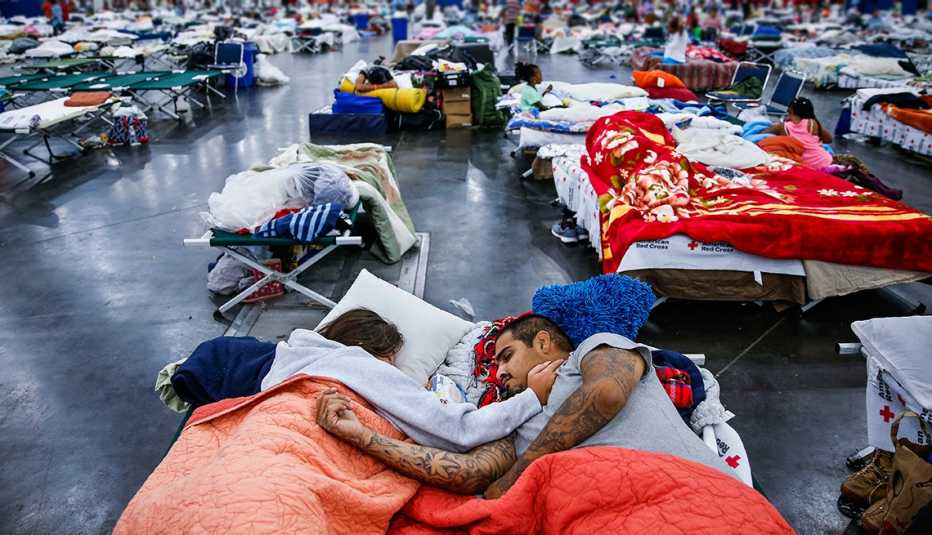AARP Hearing Center
Whether from fearsome hurricanes or rising sea levels, flooding is an increasing threat to many regions of the country, bringing with it a host of health hazards that can be challenging to keep in mind as you toil to dry out your home and salvage your belongings.
But wading through brackish waters filled with things such as sewage, industrial waste and breeding mosquitoes presents a stew of threats. Expose an open cut, and you could contract tetanus or a staph infection. Breathe in contaminated droplets — especially if your lungs are compromised or you're older — and you could find yourself battling Legionnaires’ disease. Get bit by one of those moisture-loving pests when you forget to layer on the deet, and you could wind up with West Nile virus.
As people return to flooded areas after an evacuation or have to get by until power in their area is restored, many of the most common health threats are bacterial infections — and related diarrheal disease — that can be acquired by ingesting even small amounts of contaminated water or food in a kitchen that’s been doused in flood waters or left without power.
Such infections, which include E. coli and salmonella, tend to hit older people especially hard, experts say. With E. coli, for instance, while healthy adults may recover within a week, older adults often struggle longer and are also more likely to advance to a related form of life-threatening kidney failure.
For expert tips to help feel your best, get AARP’s monthly Health newsletter.
To stay safe, here are top tips from the Centers for Disease Control and Prevention and the Food and Drug Administration:
When in doubt, throw it out
Throw away food that may have come in contact with flood or storm water; this even includes food in metal cans that haven’t been scrubbed with a bleach solution. Their labels can harbor E. coli bacteria.
Throw out perishable foods that have not been refrigerated properly due to power outages. After a power outage, the refrigerator will keep food safely cold for about four hours if it is unopened. That’s not long, which means you will likely be throwing out quite a bit of food.


































































